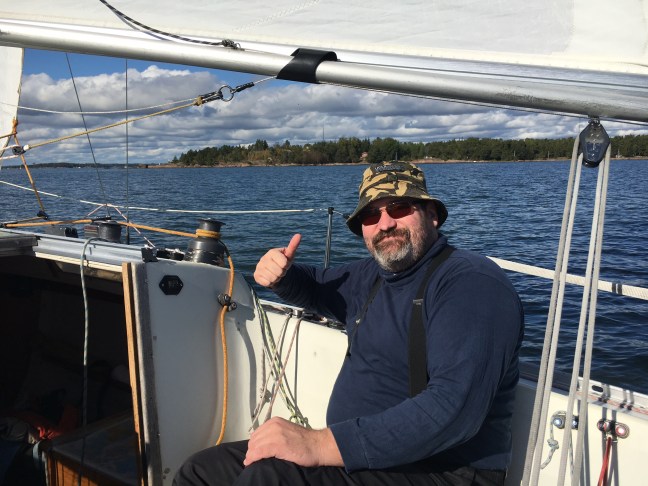We’ve had a great season this year, and with two weeks to go in the summer series, we’re in a better position than ever. Some of the races are tight, though, and it will come down to the wire. Here’s how it stands:
Tuesdays
Click Here for the detailed standings.
We are currently in third place (17.5 points) behind Top Gun (6 points) and Remarkable (8 points). They are so far ahead, that second place is out of reach. Right behind us we have Battlewagon (2.5 points behind), and Eclipse (5.5 points behind). Sandpiper (27.5 points) is probably no longer a factor.
There are two races left and each boat can drop one more of their lowest scores. We’ll miss at least one more race, so no drops for us, but Battlewagon and Eclipse could each improve there score by a few points by dropping their worst outing.
In order to cling to third place, we’ll need to compete at least one of the two next weeks — even better if we can stay ahead of Battlewagon and Eclipse.
Thursdays
Click Here for the detailed standings.
We are currently in second place (24 points) behind Top Gun (8 points) with Sabotage just one point behind. It’s likely that Doug in his viper will put in at least one more bullet to claim second place, especially as they have a DNC they can drop (worth 9 points). In the battle for third place we have a stiff contest developing: Battlewagon (3 points behind), Legacy (5 points behind), and Take Notice (6 points behind). Sandpiper and Eclipse are too far behind to be factors.
There are two races left and each boat can drop one more of their lowest scores. We may miss one more race, which means we would not benefit from the drop. Battlewagon will be able to improve a few points, while Legacy and Take Notice can each drop a DNC. Dropping our lowest scores to date, we are in a dead heat for third place with three other boats: Legacy, Take Notice, & Battlewagon.
In order to cling to third place, we’ll need to compete both of the two next weeks — even better if we can stay ahead of Legacy, and Take Notice.
Overall
Right now we are second overall!
While it will be tough to cling to a flag position on Tuesday or Thursday, we are more certain of a flag for the overall summer series, since some tough boats only sail one night a week: Legacy, Take Notice, Sabotage. Top Gun will certainly be “top gun” again (14 points so far). We have 41.5 points, Battlewagon has 47 points, whereas Sandpiper and Eclipse are well astern with 60+ points.
With the coming drops, Battlewagon will benefit more than we will, so it is a dead heat between us for 2nd and 3rd place.

































